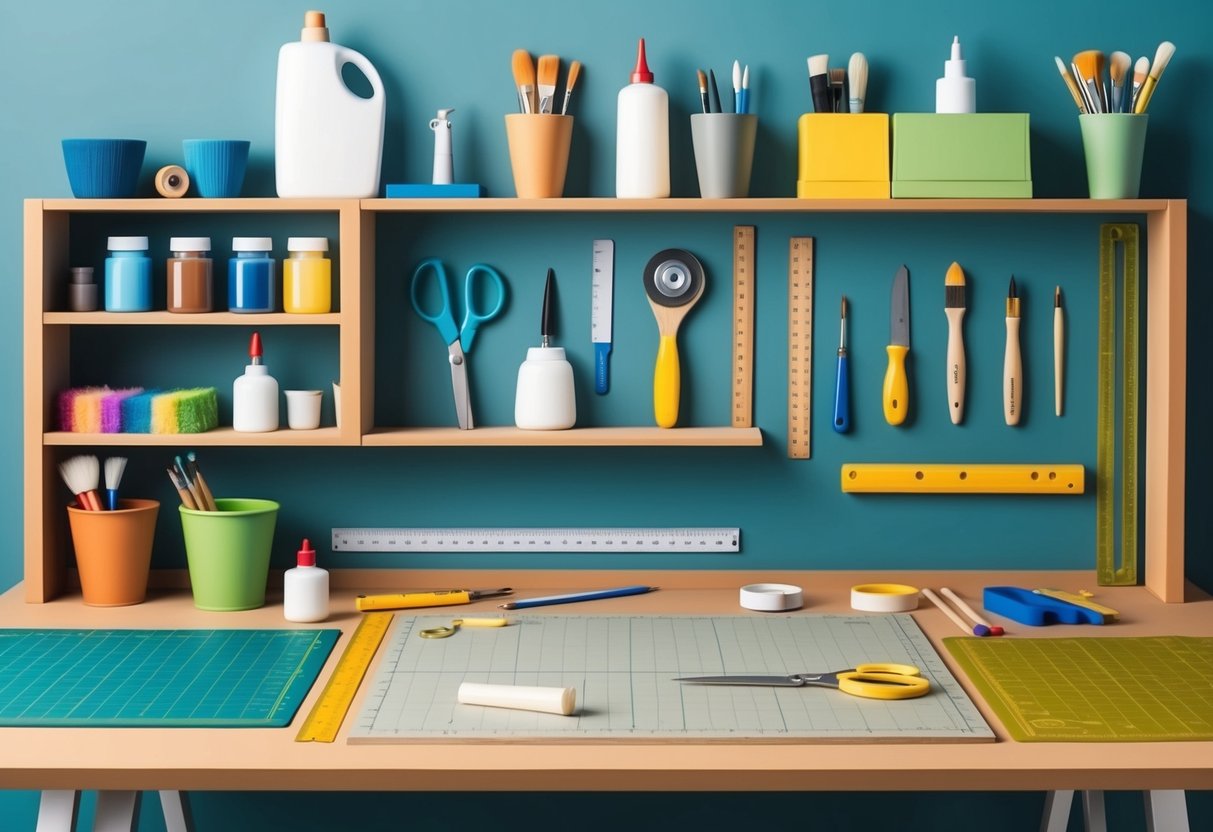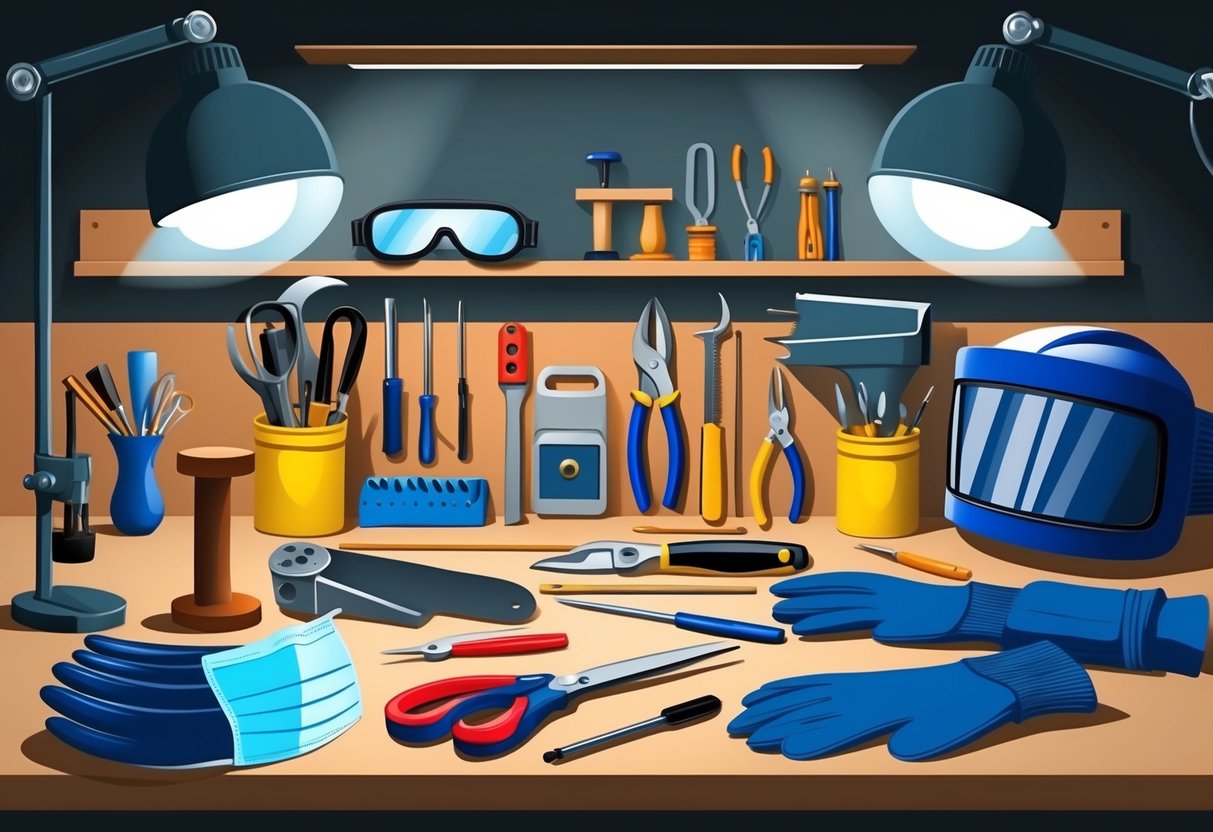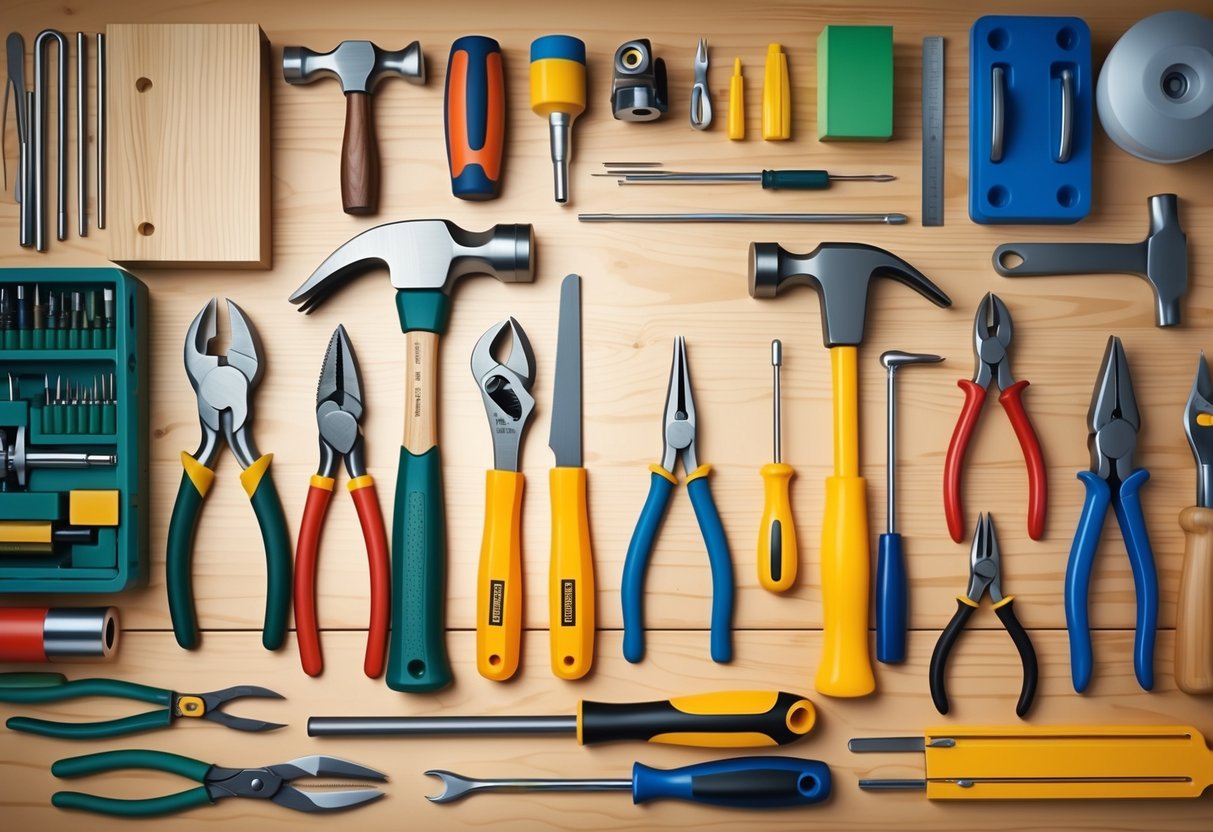
Accessory Tools and Safety Gear

Essential crafting accessories and safety equipment help protect hobbyists during all types of projects. Using the right safety gear reduces the risk of injury and improves comfort while working with hand tools, power tools, and cutting equipment.
Hearing Protection
Repeated exposure to loud equipment, such as electric saws or rotary tools, can cause lasting hearing damage. Earplugs and earmuffs are the most common forms of hearing protection for crafters.
Earmuffs offer more coverage, while foam earplugs provide a lightweight option ideal for short tasks. Proper hearing protection should fit snugly and fully cover or block the ear canal to effectively muffle harmful noise levels.
Many modern earmuffs feature adjustable headbands and padded cushions to enhance comfort during extended use. Hobbyists working in shared spaces or home workshops often prefer earmuffs with built-in radios or Bluetooth capabilities.
This allows them to listen to music or instructions without removing protection. Individuals using loud tools or machinery should wear ear protection at all times, as even short bursts of noise can be damaging.
Safety Features and Best Practices
Key safety features on crafting tools include blade guards, automatic shut-off switches, and non-slip handles. These design elements help prevent accidental cuts and slips, especially when working with sharp instruments or power tools.
Wearing safety glasses protects eyes from dust, flying debris, or glues, while cut-resistant gloves offer additional security during intricate tasks. Hobbyists should keep a first-aid kit on hand and use dust masks or respirators when sanding, painting, or gluing materials.
Proper storage of sharp accessories, such as scissors and hobby knives, in cases or containers reduces accidental contact. Always check equipment for damage before use and keep workspace lighting bright to spot potential hazards.
For additional recommendations on crafting safety, enthusiasts can consult lists of essential supplies and guidance from reputable DIY resources.
Essential Tools for Miniature and Scale Models
Creating detailed miniature and scale models relies on a selection of specialized tools that address the unique needs of plastic assembly, fine detailing, and precise customization. Skilled hobbyists use these to improve fit and finish, tackle complex modifications, and ensure every part is assembled cleanly.
Specialty Tools for Model Building
For plastic model assembly, precise cutting tools are critical. The Tamiya 74035 sharp pointed side cutter stands out for its ability to cleanly snip parts from sprues, reducing stress marks and the risk of damaging delicate details.
Quality sprue cutters minimize cleanup and maintain part integrity. A sharp hobby knife, often paired with a variety of disposable blades, is essential for slicing, trimming, and removing stubborn mold-lines.
Fine-grit sanding sticks or sanding films further refine surfaces, which is important for smooth paint application. For cementing plastic parts, Tamiya Extra Thin Cement offers excellent flow and strong, clean bonds.
Its narrow applicator brush allows controlled application, making it easier to glue small or detailed components. Files and tweezers also support detail work by letting the builder manipulate minute parts and surfaces with control and accuracy.
Other essentials include a pin vise for drilling holes in plastic and metal, allowing exact placement for structural pins, wiring, or mounting hardware. A well-organized tool set can be found recommended on essential model making tool lists.
Converting and Customizing Miniatures
Converting miniatures involves remaking poses, swapping parts, or adding detail not found in the original kit. This requires tools suited for modifying and combining materials.
The pin vise enables fine drilling for techniques like pinning, which reinforces connections when attaching limbs or heavy components. Precision side cutters and a hobby knife help remove sections of plastic cleanly, which is important for smooth-fitting conversions.
Tweezers are used for placing tiny custom parts, while files and sanding sticks help blend seams and surface transitions. Gap-filling super glue and putty allow builders to fill in spaces when combining different components.
This creates a seamless look on the finished figure. Modelers can find comprehensive advice and equipment recommendations from guides such as Tools of the Trade: Essential Modeling Supplies.
Mold-line removal is critical before modification, since leftover seams interrupt detail and prevent a convincing finish. The right tools allow hobbyists to customize miniatures precisely while maintaining strong structural integrity.
Tool Storage and Maintenance

Proper storage and regular upkeep are crucial for extending the life of crafting tools. Clean, organized spaces not only protect tools but also make every project easier and safer to complete.
Toolboxes and Organization
Choosing the right toolbox is essential for any hobbyist. A sturdy, well-designed toolbox keeps essential crafting tools such as hobby knives, saw frames, and pliers organized and easy to access.
Drawer organizers, peg boards, and compartments for small items like drill bits or screws can prevent clutter and reduce the risk of losing important components. For those with an expanding tool collection, modular storage systems and stackable bins allow for flexibility and customization.
Portable toolboxes are useful for on-the-go projects or those who work in multiple locations. Including labels or color coding can further improve efficiency when locating specific items.
Keeping frequently used tools at the top of the box or within easy reach saves time during crafting sessions. A tidy workspace also supports safety, as loose blades or misplaced fasteners pose hazards.
For additional ideas and smart organization options, visit this guide on essential tools for every hobbyist.
Maintaining Tool Durability
Tool durability depends on regular cleaning, prompt repairs, and proper storage.
Hand tools like hammers and pliers should be wiped down after each use to prevent buildup of dust or adhesives.
Blades and drill bits require sharpening or replacement to ensure optimal performance and prevent accidents caused by dull edges.
Rust is a common threat to metal tools.
Silica gel packs or dehumidifiers placed inside toolboxes help control moisture and protect against corrosion.
Lubricating moving parts such as hinges and joints keeps tools operating smoothly and extends their lifespan.
Inspecting each tool periodically for wear or damage allows hobbyists to address small problems before they become larger issues.
Using tools for their intended purpose and not forcing them through tougher materials also helps maintain durability.



